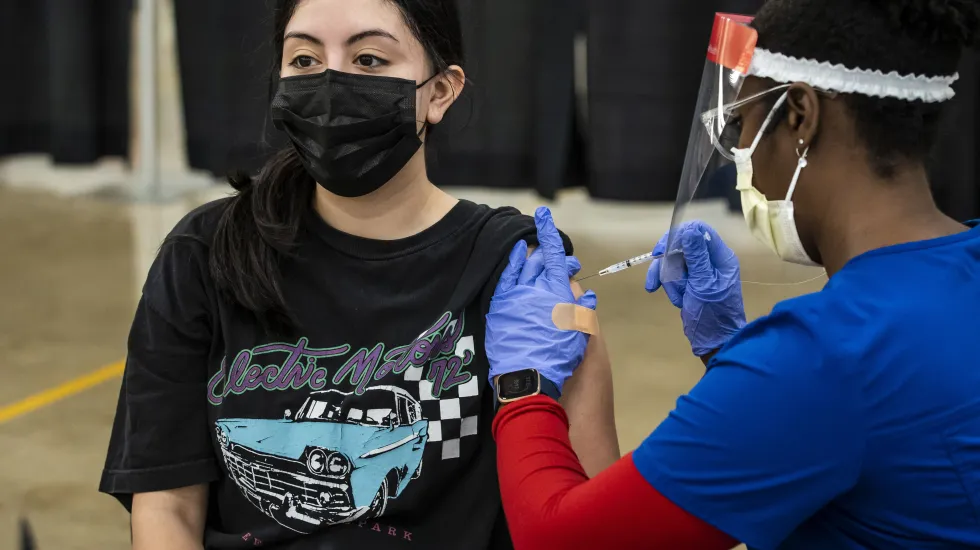
Public health officials say now’s the time to roll up a sleeve for a COVID-19 booster shot as cases rise across Illinois to the highest level seen in over three months.
The Illinois Department of Public Health reported 8,411 new infections Friday, the most in a day since Feb. 4. Average daily cases have more than tripled over the past month and nearly quintupled since mid-March, the brutal result of the more infectious BA.2 Omicron subvariant spreading nationwide.
Almost a quarter of Illinois counties — including the entire Chicago area — have risen to the “medium” COVID risk level as calculated by the U.S. Centers for Disease Control and Prevention, meaning older people and the immunocompromised are urged to mask up in public indoor settings.
The only thing preventing a more devastating resurgence is the fact that about three-quarters of Illinoisans are vaccinated — but residents can do better, officials say.
About half of eligible recipients statewide have gotten the booster dose that has proven to help keep people out of hospitals due to COVID, and just 41% of eligible Chicagoans have taken the time to get their third dose.
“The rise in COVID-19 cases is something we are watching very closely and not taking lightly,” Chicago Public Health Commissioner Dr. Allison Arwady said in a statement. “Thankfully, many fewer Chicagoans are being hospitalized right now with COVID-19 than in prior waves, mostly thanks to vaccines and boosters. We want to keep it that way and see our case numbers trend back down, so we ask everyone to do their part.”
New COVID-19 cases by day
Graphic by Jesse Howe and Caroline Hurley | Sun-Times
Source: Illinois Department of Public Health
Graph not displaying properly? Click here.
About a thousand Chicagoans have tested positive each day over the past week, a rate that climbed up 32% from the previous week — and that doesn’t include at-home tests.
Twenty-three Illinois counties have now gone yellow on the CDC’s color-coded transmission rating system. A week ago, only 14 of Illinois’ 102 counties were marked yellow, which signifies a “medium” risk level.

A broader mask mandate won’t be considered in Chicago unless the city rises to the orange “high” risk category, which would be triggered if hospital admissions spike and intensive care unit availability shrinks significantly. Admissions would have to roughly double in Chicago for that to happen.
Statewide, hospitalizations are rising, but at a slower pace. About 79 Illinoisans have entered hospitals with COVID each day over the past week, including about 18 per day in Chicago. Those are one-week jumps of about 18% and 3%, respectively.
A total of 909 hospital beds across Illinois were occupied by coronavirus patients Thursday night, the most seen since early March.
No Illinois counties have risen to the “high” risk level yet, but the orange is creeping from the East Coast into the Midwest. Transmission is considered high in Kenosha and Racine counties in Wisconsin, along with 15 Michigan counties, mostly clustered around Detroit.
“While case counts are rising, we would urge the public not to be alarmed, but to be aware of this trend and to take action by making sure they are up-to-date with vaccinations and booster shots,” acting Illinois Public Health Director Dr. Amaal Tokars said in a statement.
Besides masking up and getting up to date on shots, Arwady advised residents to move activities outside when possible, and to get tested at the first sign of COVID symptoms.
“Layering these measures on top of each other works best, and together they can help Chicago get back down to Low level, which is where we all want to be this summer,” she said in her written statement.
For help finding a shot, visit vaccines.gov.







